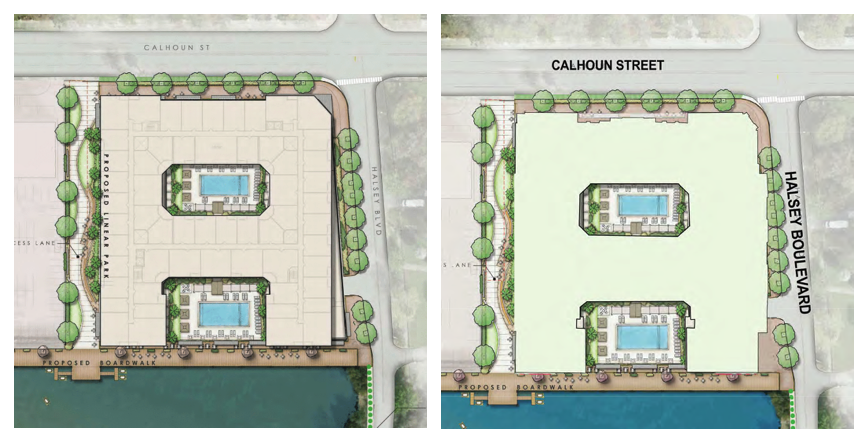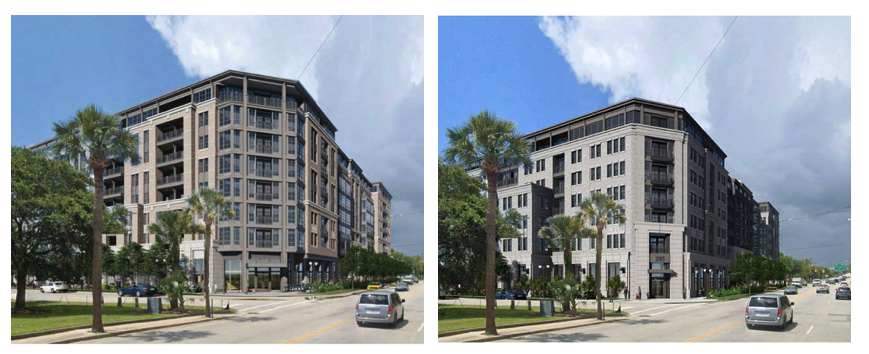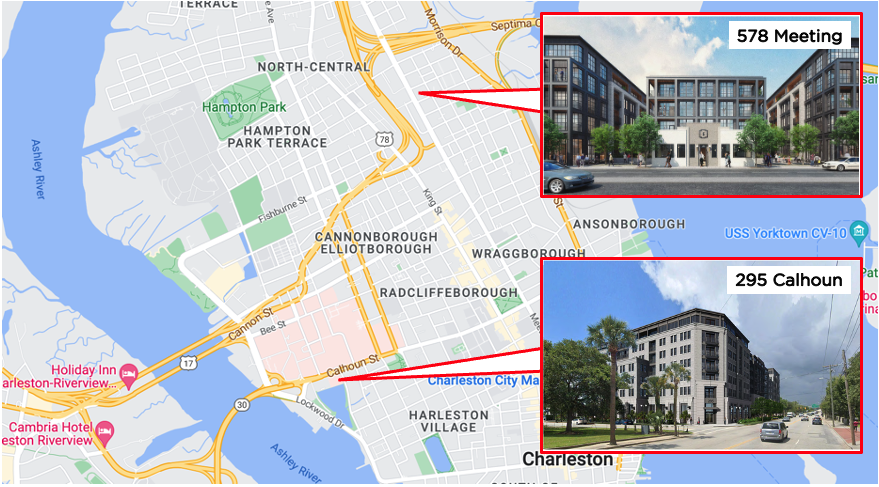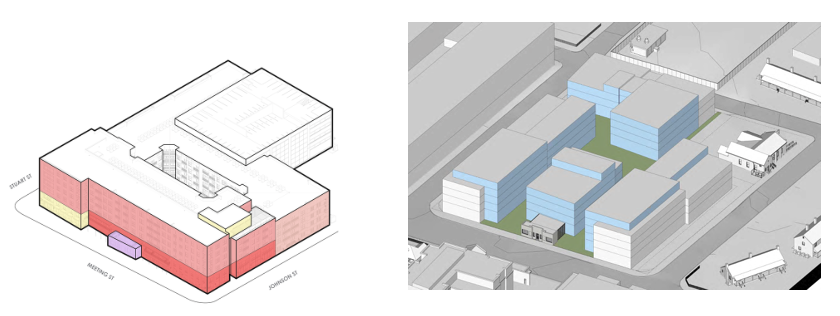UPDATE: 295 Calhoun Street will again go before the BAR-L next week, on March 8, according to agendas released Friday by the City of Charleston.
Denials of projects at BAR are challenging for everyone involved in the process – we all much prefer to see projects succeed. That’s why we routinely meet with project teams well in advance of submissions to help positively shape projects long before they reach a public hearing. However, when program and profit outweigh quality design, it’s our duty to stand firm against inappropriate proposals that threaten the special character of our city.
When a project is denied, the expectation is that the applicant will return with a completely rethought design that does not resemble the previous version. A denial does not have to spell defeat for a project, rather, it can be an opportunity to introduce a fresh approach that responds to Board and community feedback and meaningfully contributes to Charleston.
The success of the design review process often hinges on this response, which is clearly illustrated through the contrasting trajectories of two major projects currently under BAR review at 578 Meeting and 295 Calhoun.
578 MEETING STREET
Left: First version of the project showing massing across nearly the entire site, denied by the BAR-L in July 2021; Right: Latest version of the project conceptually approved by the BAR-L in February 2023, with massing broken up into separate buildings.
A positive example of going back to the drawing board is the revised proposal for the Regis Milk site at 578 Meeting Street, which returned to the BAR-L last week after receiving three previous denials for issues with height, massing, and architectural direction. Given the property spans nearly an entire city block, the PSC has consistently called for a multiple-building approach.
We were pleased to see the latest version break down the massing into separate, vertically oriented building footprints, which responds to the rhythm and character of Charleston’s urban fabric. Also, while earlier designs overshadowed the preserved Regis Milk façade, new plans sufficiently push back the new construction to emphasize the historic façade as the development’s main entry and centerpiece. In recognition of the applicant’s reconsideration of the project, the BAR-L gave the project conceptual approval, putting it on the path to becoming reality.
295 CALHOUN STREET


Conversely, the ongoing review of the project at 295 Calhoun Street has been a very different experience. Also having received three denials, the developer continues to bring forward the same design concept that does not address fundamental issues that have been expressed time and time again by the PSC and members of the BAR-L.
In many ways, reasons for denial between these two projects have been very similar: a blocky building massing, height that doesn’t step down to the scale of the adjacent neighborhood, and generic, poorly executed architecture. However, the latest response to this feedback could not be more different – while 578 Meeting completely redesigned the site in line with BAR expectations and community values, the 295 Calhoun team continues trying to muscle through an inappropriate proposal.
We uphold designs that show thoughtful restudy and applaud applicants that listen to the Board and do their due diligence with community stakeholders to get a project right. The Board of Architectural Review is entering its 92nd year as an institution and serves as a critical line of defense in preserving Charleston’s unique sense of place. Cases like 578 Meeting Street show the design review process works and relies heavily on an engaged citizenry to ensure new construction is of a standard Charleston deserves — thank you for standing with us.


